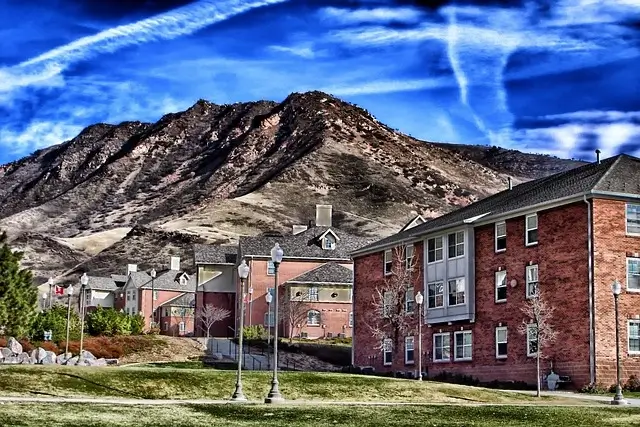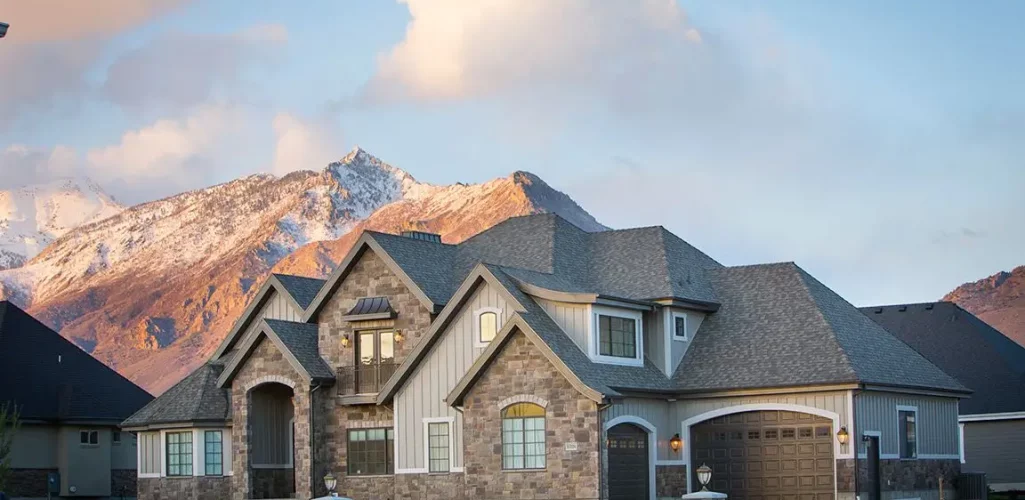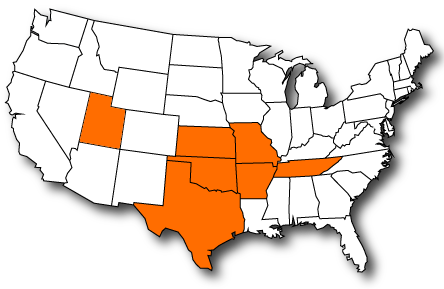Home insurance, also called homeowners insurance, protects homeowners in Utah financially from risks like natural disasters, theft, and liability. Having this coverage is important for homeowners. However, the cost of home insurance can vary significantly based on numerous factors.
In Utah, several key elements influence home insurance rates, each contributing to the overall premium a homeowner might pay. This article explores the top factors affecting home insurance rates in Utah, providing a comprehensive understanding of how these elements impact the cost of home insurance coverage.

1. Geographic Location
Geographic location is one of the most significant factors affecting home insurance rates in Utah. Insurers consider the specific location of a home to assess the risks associated with natural disasters, crime rates, and proximity to fire stations.
a. Natural Disasters
Utah is susceptible to various natural disasters, including earthquakes, wildfires, and floods. The likelihood of these events occurring in a particular area can significantly influence insurance premiums. For example, homes located near fault lines may face higher rates due to the increased risk of earthquakes. Similarly, areas prone to wildfires or floods might see elevated premiums to account for the heightened risk.
b. Crime Rates
Areas with higher crime rates typically result in higher insurance premiums. Insurers assess the risk of theft, vandalism, and other criminal activities when determining rates. Homeowners in neighborhoods with lower crime rates often benefit from reduced insurance costs.
c. Proximity to Fire Stations
The distance of a home from the nearest fire station and hydrant can impact insurance rates. Homes closer to fire stations usually have lower premiums because the risk of significant damage from a fire is reduced due to quicker response times.
2. Home Characteristics
The specific characteristics of a home, including its age, construction type, and size, play a crucial role in determining insurance rates.
a. Age of the Home
Older homes may have higher insurance premiums due to potential issues related to outdated electrical, plumbing, and heating systems. These systems can pose higher risks for fire and water damage, leading to increased insurance costs. Conversely, newer homes often have modern safety features and building codes that can result in lower premiums.
b. Construction Type
The materials used in a home’s construction affect its susceptibility to damage from natural disasters and other hazards. For example, homes built with fire-resistant materials or those that meet higher building standards can have lower insurance rates. Additionally, the type of roof can influence premiums; durable roofing materials may reduce the risk of damage from severe weather, thereby lowering insurance costs.
c. Home Size and Value
The size and value of a home directly impact the cost of insurance. Larger and more valuable homes typically require higher coverage limits, leading to higher premiums. Insurers also consider the cost of rebuilding a home in the event of total loss, which is influenced by the home’s size, construction quality, and local building costs.
3. Coverage Levels and Deductibles
The amount of coverage a homeowner chooses and the deductible amount can significantly influence insurance rates.
a. Coverage Levels
Homeowners can select varying levels of coverage, from basic policies that cover specific perils to comprehensive policies that offer broader protection. Higher coverage limits and additional endorsements for specific risks, such as earthquakes or valuable personal property, will increase the overall premium.
b. Deductibles
The deductible is the amount a homeowner must pay out-of-pocket before the insurance coverage kicks in. Choosing a higher deductible can lower the insurance premium since the homeowner assumes more financial responsibility in the event of a claim. Conversely, a lower deductible results in higher premiums but reduces out-of-pocket expenses when filing a claim.
4. Claims History
A homeowner’s claims history is a crucial factor in determining insurance rates. Insurers view homeowners with a history of frequent claims as higher risk, leading to increased premiums.
a. Frequency of Claims
Homeowners who have filed multiple claims in the past are likely to face higher insurance rates. Insurers may perceive frequent claims as an indicator of increased risk, whether due to the homeowner’s behavior or the condition of the property.
b. Type of Claims
The nature of previous claims also impacts rates. Claims related to significant losses, such as fires or major water damage, can lead to higher premiums. Conversely, minor claims may have a less substantial effect on rates, but they can still contribute to an overall increase if they occur frequently.
5. Credit Score
In Utah, as in many other states, a homeowner’s credit score can influence home insurance rates. Insurers use credit scores as an indicator of financial responsibility and risk.
a. Credit-Based Insurance Scores
Credit-based insurance scores are used to predict the likelihood of a policyholder filing a claim. Homeowners with higher credit scores typically receive lower insurance rates because they are viewed as less likely to file claims. On the other hand, those with lower credit scores may face higher premiums due to the perceived increased risk.
b. Financial Responsibility
A good credit score reflects financial responsibility, which insurers correlate with responsible homeownership. Timely payments of bills, maintaining low debt levels, and avoiding bankruptcies contribute to a higher credit score, potentially leading to lower insurance premiums.
6. Safety and Security Features
The presence of safety and security features in a home can lead to lower insurance premiums by reducing the risk of damage or theft.
a. Fire Safety Features
Homes equipped with fire safety features, such as smoke detectors, fire extinguishers, and sprinkler systems, are often eligible for discounts on insurance premiums. These features can mitigate the extent of fire damage, reducing the risk for insurers.
b. Security Systems
Security systems, including burglar alarms, surveillance cameras, and secure locks, can also lower insurance rates. These systems deter theft and vandalism, decreasing the likelihood of a claim related to criminal activity.
7. Homeowners Association (HOA)
Living in a community with a homeowners association (HOA) can impact insurance rates. HOAs often enforce maintenance standards and provide amenities that reduce risk.
a. Maintenance Standards
HOAs typically require homeowners to maintain their properties to specific standards, reducing the risk of damage and subsequent claims. Regular maintenance of roofs, landscaping, and common areas can contribute to lower insurance rates.
b. Community Amenities
Communities with amenities such as swimming pools, parks, and clubhouses may have varying effects on insurance rates. While these amenities can enhance property values, they also introduce additional risks that may lead to higher premiums.
8. Local Building Costs
The cost of rebuilding a home after a total loss is a critical factor in determining insurance rates. Local building costs, including labor, materials, and compliance with building codes, vary across Utah.
a. Labor and Material Costs
In areas with higher labor and material costs, insurance premiums tend to be higher to account for the increased expense of rebuilding. Conversely, regions with lower building costs may see more affordable insurance rates.
b. Building Code Requirements
Strict building codes that mandate specific construction standards can influence insurance rates. Homes built to meet higher standards may have lower premiums due to their improved resilience to damage. However, if local codes require costly compliance measures, this can drive up insurance costs.
9. Insurer-Specific Factors
Different insurance companies have varying approaches to calculating premiums based on their unique risk models, underwriting criteria, and business strategies.
a. Underwriting Criteria
Each insurer has its own underwriting criteria, which can result in different rates for the same property. Factors such as the insurer’s claims experience, risk tolerance, and market competition play a role in determining premiums.
b. Discounts and Incentives
Insurers often offer discounts and incentives that can reduce premiums. Common discounts include multi-policy discounts for bundling home and auto insurance, loyalty discounts for long-term customers, and discounts for homes with specific safety features.
10. Economic and Market Conditions
Broader economic and market conditions can influence home insurance rates in Utah. Factors such as inflation, housing market trends, and the overall financial health of the insurance industry play a role.
a. Inflation
Inflation affects the cost of labor, materials, and services required for home repairs and rebuilding. As these costs rise, insurance premiums may increase to ensure adequate coverage for potential claims.
b. Housing Market Trends
The state of the housing market can impact insurance rates. In a booming market with rising home values, insurance premiums may increase to reflect the higher replacement costs. Conversely, in a declining market, premiums may stabilize or decrease.
c. Insurance Industry Health
The overall financial health of the insurance industry can influence rates. Factors such as investment returns, loss ratios, and regulatory changes affect insurers’ pricing strategies. A financially robust industry may offer competitive rates, while an industry facing challenges might pass on costs to policyholders through higher premiums.
Conclusion
Home insurance rates in Utah are influenced by a complex interplay of factors, each contributing to the overall cost of coverage. Understanding these factors can help homeowners make informed decisions when selecting insurance policies and implementing measures to potentially lower their premiums.
By considering geographic location, home characteristics, coverage levels, claims history, credit scores, safety features, HOA involvement, local building costs, insurer-specific factors, and economic conditions, homeowners can better navigate the landscape of home insurance and secure the protection they need at a reasonable cost.
Ready to find the best home insurance rates in Utah? G&G Independent Insurance is here to help. Contact us today for a personalized quote and expert guidance on securing comprehensive coverage at competitive prices!


